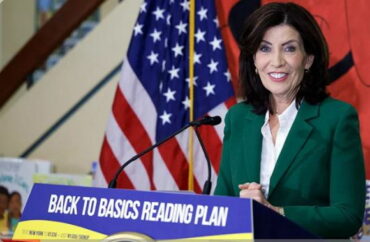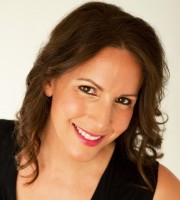
‘Science of reading’ movement gains steam nationwide
Democratic New York Gov. Kathy Hochul recently shepherded a 2025 budget that will require K-12 classrooms use phonics-based reading instruction — and fund programs to teach phonics training to future teachers across the state’s public universities.
A Latino California Democratic state representative, Rep. Blanca Rubio, worked over the past year to advance a bill, AB 2222, to require phonics instruction for future teachers as part of higher education accreditation programs.
A law in Georgia passed in 2023 requires future teachers be taught reading instruction tactics based on phonics.
These examples show that after decades of American students struggling to learn how to read using whole language and context clues, many leaders — including those in deep blue states — want to go back to proven phonics instruction, now referred to as the “science of reading” approach, according to education expert Lance Izumi.
The science of reading focuses on phonics, vocabulary and comprehension lessons, and is backed by evidence, studies and research showing it is the most effective way to teach young people how to read, he said.
“There is light at the end of the tunnel,” Izumi told The College Fix in a telephone interview Wednesday.
Izumi is senior director of the Center for Education at the Pacific Research Institute and author of “The Great Classroom Collapse: Teachers, Students, and Parents Expose the Collapse of Learning in America’s Schools,” published this summer.
Ed Week recently reported that the “‘science of reading’ movement is sweeping through state legislatures,” adding over the last decade, “39 states and the District of Columbia have passed laws or implemented new policies related to evidence-based reading instruction.”
Izumi’s book details the uphill battle lawmakers face: a National Council on Teacher Quality report from 2023 found 75 percent of the college teacher preparation programs surveyed failed to address proven “science of reading” components.
“Equally concerning is the NCTQ’s finding that four out of 10 teacher preparation programs ‘are still teaching multiple practices contrary to long-standing research, which can undermine the effects of scientifically based reading instruction.'”
But the wave of policies pushing “science of reading” programs in both K-12 classrooms and schools of education is promising, although it’s like turning the Titanic, Izumi said.
“Maybe we can turn the Titanic in time — at least for the kids entering the system,” he said, adding it’s too late for the entire “lost generation of kids” taught under the failed method.
“Among the practices that are contrary to scientific evidence are instructional methods such as balanced literacy, the three-cueing system, readers’ workshop, and leveled texts,” according to Izumi’s book, which weaves data with personal anecdotes from professors and teachers who have grappled with teaching children using unproven methods.
He called the turning tide an “awakening,” but cautions the damage is done. Professors, for example, have dumbed down their classrooms and reduced reading and homework loads, he said.
“Given we have this lost generation of kids that have gone through the education system — is the turning of the education system going to be in time, or will we still sink because of that glancing blow,” he said.
“At least for some time, even under the best of circumstances, we are going to have to deal with an underprepared workforce.”
MORE: What today’s young people need to thrive–tough standards with encouragement: psychology professor
IMAGE: Kathy Hochul YouTube page
Like The College Fix on Facebook / Follow us on Twitter






Please join the conversation about our stories on Facebook, Twitter, Instagram, Reddit, MeWe, Rumble, Gab, Minds and Gettr.